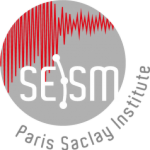
- Cet évènement est passé
Soutenance HdR F. Hollender – 11/07/2019 – 15:00 – ISTerre, Grenoble
11 07 2019 @ 15 h 00 min - 17 h 00 min

Fabrice HOLLENDER (Institut des Sciences de la Terre)
a le plaisir de vous inviter à la soutenance de son habilitation à diriger des recherches
“Improvement of practices for a more robust site-specific seismic hazard assessment”
Elle se déroulera le jeudi 11 juillet 2019 à 15h00, dans l’amphithéâtre ‘Kilian’ de l’ISTerre
(OSUG-C, 1381 rue de la Piscine, 38400 SAINT MARTIN D’HÈRES)
devant un jury composé de :
Ralph ARCHULETA (Professeur, UCSB, Rapporteur)
Gail ATKINSON (Professeur, UWO, Rapporteure)
Pierre-Yves BARD (IGPEF, Ingénieur-Chercheur IFSTTAR, ISTerre, UGA, Examinateur)
Anne DESCHAMPS (Directeur de Recherche CNRS, Géoazur, UNS, Examinatrice)
Konstantinos PAPAZACHOS (Professeur, AUTH, Rapporteur)
Alain PECKER (Professeur, Ecole des Ponts Paritech, Examinateur)
“Improvement of practices for a more robust site-specific seismic hazard assessment”
Site-specific seismic hazard assessment addresses a wide range of issues, whether on the ‘target side’ (site where the hazard is investigated) or on the ‘host side’ (accelerometric networks producing the data needed to derive ground motion prediction models).
On the ‘target’ side, two international benchmarks were organised to improve the practices necessary for the numerical simulation of site effects (complex geometry, linear domain: E2VP; plane geometry, non-linear rheology: PRENOLIN). However, numerical simulations alone cannot be used to assess site effects: empirical measurements, which can provide valuable information, even in low-seismic areas, must be carried out.
A precise and methodical site characterization must also be carried out. The’InterPacific’ benchmark has made it possible to optimize and make more reliable the implementation of non-invasive methods for determining S-wave velocity profiles. But site characterization should not only be confined to target sites, it should also benefit accelerometer seismological network sites. Also, a systematic effort to characterize the RAP network has been undertaken.
The definition of the hard-rock ground motion is a critical part of site-specific seismic hazard studies. Indeed, the current Ground Motion Prediction Equations (GMPEs) are poorly constrained for hard-rock sites. The standard procedure is to adjust the GMPEs from the host to the target site conditions by applying so-called Vs-kappa adjustments. In such approach, the most critical parameter is the target site kappa. In low-seismicity areas, the collection of a sufficient number of records is difficult. Moreover, the kappa physical bases are not fully understood and we strongly question the usual interpretation (‘high frequency attenuation’) associated with this parameter. An alternative approach, that does not use kappa and that involves a correction of the local amplification at each accelerometric site, was developed on a subset of the Kik-net database. The results showed significant differences with respect to the standard host-to-target approaches. Finally, we discuss the difficulty of performing high-frequency ground motion measurements given any factors that may bias it.
